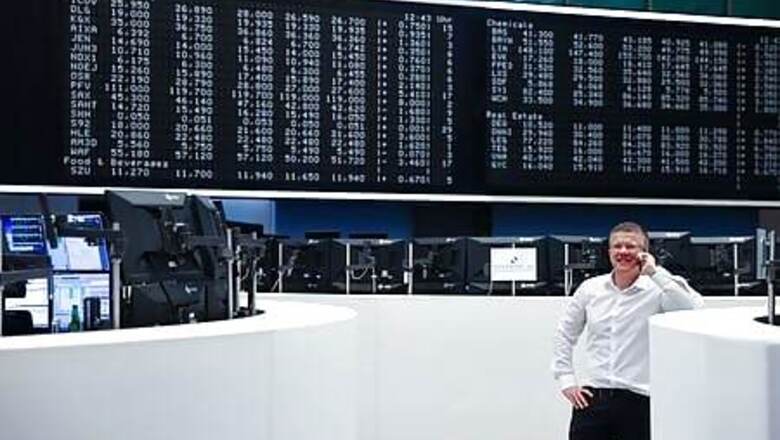
views
NEW YORK Gold pushed further past $2,000 on Wednesday in the face of a weak dollar and expectations of more stimulus measures for the pandemic-ravaged global economy, while stocks in Europe and on Wall Street rallied on encouraging corporate earnings.
Oil prices rose to their highest since early March on a big drop in U.S. crude inventories and on the weak dollar, which was pushed lower by data showing euro zone business activity returned to modest growth in July.
The final Composite Purchasing Managers’ Index (PMI) from IHS Markit climbed to 54.9 from June’s 48.5, better than a 54.8 flash estimate, indicating significant improvement consistent with the continued easing of lockdowns, analysts said.
Gold set a new record after scaling $2,000 for the first time on Tuesday, as investors seek a store of value on fears government stimulus in response to the pandemic will trigger inflation, devalue other assets and keep bond yields low.
Spot gold prices rose 1.53% to $2,049.00 an ounce, after earlier reaching a record $2,055.1006.
The dollar standard of the past 50 years is under open question because of the enormous amount of increased money supply by the Federal Reserve, said Ryan Giannotto, director of research at alternative ETF provider GraniteShares.
“The dollar is collapsing under the weight of $3 trillion in printed dollars, this all comes out in the wash with higher gold prices,” Giannotto said.
Gold has gained nearly 35% so far in 2020 and is one of the year’s best-performing assets.
Gold versus U.S. yields and dollar https://fingfx.thomsonreuters.com/gfx/mkt/qzjvqwdrnvx/aug%205%20gol-10yr-dxy.png
A surprise quarterly profit from Walt Disney Co and a slate of upbeat results from healthcare companies lifted sentiment on Wall Street, while European shares rose on a slate of positive results. Disney shares jumped 10.4%.
In Europe, the broad FTSEurofirst 300 index added 0.38% at 1,417.72.
The Dow Jones Industrial Average rose 1.25%, the S&P 500 gained 0.72% and the Nasdaq Composite added 0.45%.
MSCI’s benchmark for global equity markets rose 0.93% to 564.47. Emerging markets stocks rose 1.26%.
The dollar extended losses after U.S. private payrolls growth slowed sharply in July, pointing to a loss of momentum in the labor market and overall economic recovery as new COVID-19 infections spread across the United States.
The ADP National Employment Report showed private payrolls increased by 167,000, far less than an increase of 1.5 million economists polled by Reuters had forecast. U.S. Treasury yields rose after the report, halting their recent trend lower.
“Clearly, we have seen risk appetite rebound on global markets and sort of a return of the theme of a U.S. underperformance relative to world counterparts,” said Karl Schamotta, chief market strategist at Cambridge Global Payments in Toronto.
The dollar index fell 0.557%, with the euro up 0.79% to $1.1893.
The Japanese yen strengthened 0.21% versus the greenback at 105.49 per dollar.
Coronavirus and financial markets https://fingfx.thomsonreuters.com/gfx/mkt/rlgpdngkkpo/GLOB00508.PNG
The U.S. government bond yield curve steepened as the prospect of increased supply in longer-dated debt dampened prices following the Treasury Department’s announcement that it would borrow more this quarter than previously anticipated.
The 10-year U.S. Treasury note rose 4 basis points to yield 0.5526%.
Oil prices rose. Brent crude futures rose $1.54 to $45.97 a barrel. U.S. crude futures gained $1.55, to $43.25 a barrel.
Interactive Graphic: Emerging markets http://tmsnrt.rs/2ihRugV
Interactive Graphic: World FX rates http://tmsnrt.rs/2egbfVh
Interactive Graphic: MSCI All Country World Index Market Cap http://tmsnrt.rs/2EmTD6j
Interactive Graphic: Global assets in 2020 http://tmsnrt.rs/2jvdmXl
Disclaimer: This post has been auto-published from an agency feed without any modifications to the text and has not been reviewed by an editor
















Comments
0 comment